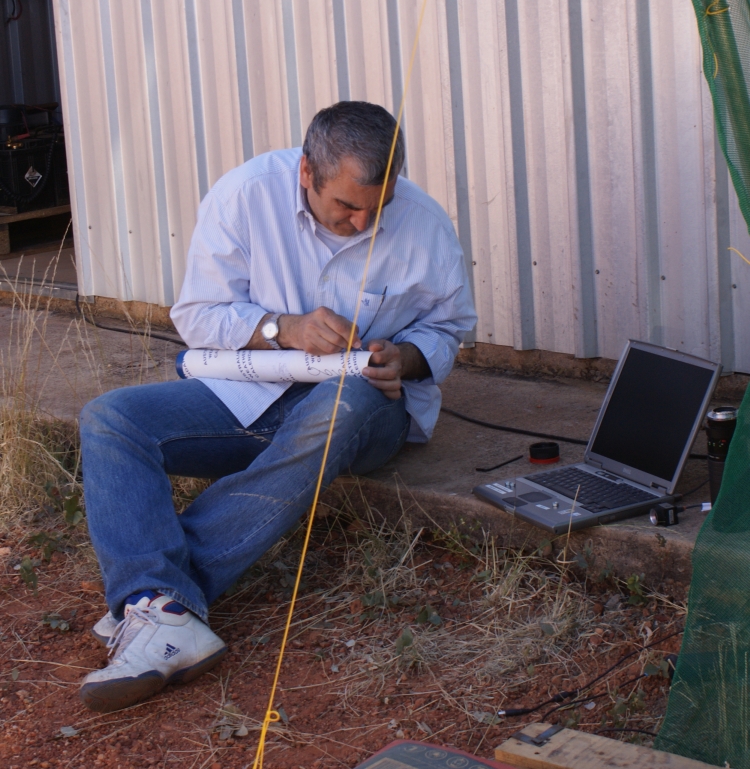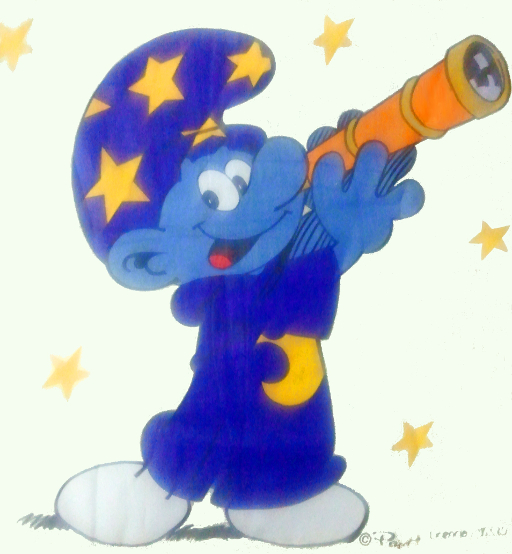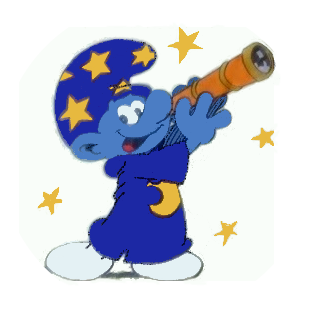

Contact
Roberto López López
Instituto de Astrofísica de Canarias
c/Vía Láctea s/n
38205 – La Laguna / Sta. Cruz de Tenerife
922 605 306
630 487 059
roberto.lopez.lopez@iac.es
Profession / Affiliation
Instrumentalist,
Optical Engineer
Instituto de Astrofísica de Canarias
Degree / Education
PhD in Applied
Physics
Master in Applied Physics:
Specialty Environment
Licensed in Science:
Specialty Astrophysics
Projects & Instruments
OFTACROM*
ISOPHOT-S**
CORRELADOR SOLAR
SENSOR DE FRENTE DE ONDA
CAIN
LIRIS
OSIRIS-GTC
GREGOR
FastCam***
EMIR-GTC
Wide-FC
ESTranGIS
AOLI
GTCAO
IACsat
FastPlan
GREST
Keywords
Optical
Design
Instrumentation
AIV
Radiometry
Adaptive Optics
Lucky Imaging
Integral Field Unit (IFU)
Slicer
Astrophysics
Courses
Code-V Introduction - ORA, 1994
Code-V Advanced - ORA, 1996
Introduction to Radiometry - IAC-IFA, 1997
Interferometry and Optical Testing – Zygo, 2000
Zemax - Custom Specialized I &II, 2016-2017
Computing
UNIX-LINUX, WINDOWS, DOS
FORTRAN, C, Pascal
MATLAB/OCTAVE, Python, Julia
IRAF,
Code-V, ZEMAX,
OSLO
FreeCAD, LibreCAD
AutoCAD, SketchUp,
LaTeX, LibreOffice
Techcniques
Astrophysics
Optics
Instrumentation
AIV
Infrared
Phtometry/ Radiometry
Spectroscopy
Optical Metrology
Prototyping
Adaptive Optics
Lucky Imaging
I love this game

I love this game
Roberto López López
[In] Profile (of)
Instrumentalist
Astrophysicist,
Optical Engineer
The instruments at the telescopes are a necessary resource to study the light coming from the stars and to do Astrophysics. "Astrophysics is theoretical and experimental but it will need instruments, and instrumentalists are a scarce and valuable resource" (Prof. Carlos Sánchez Magro, 1983). Optics is the first step to define an instrument, we need to design it and then manufacture and integrate it, doing a verification of its functionality. The amazing point about optical instrumentation is the development and prototyping from lab and going through the alignment, integration and verification to the commissioning at telescope. This is what I do in the labs. Or in middle of Australian desert for the following of transit of Venus in 2012 (photo).
Bakground

Led by Chiqui Galán and Carlos Sánchez I derived my enthusiasm and dreams of observational astronomy and research towards the instrumentation. Perhaps my skills with machines, perhaps by the desire for learning to control instruments, I started with works of test, verification and calibration, as well as adapting and improving the capabilities of someone, no longer in use, devices (Razdow Solar Telescope for observation in Hα line, Spectral Comparator,...) or, the implementation of any new one (Perkin Elmer microdensitometer).
Even as a student, between specialization courses I stayed at the Institute of Optics «Daza de Valdés» in Madrid for spectrophotometric calibration of a photodiode with a photopic filter under the supervision of Prof. Antonio Corrons and Dr. Alicia Pons.
However, my first job as an instrumentalist was not an instrument for astrophysics, but clinical. For Prof. González de la Rosa, of the Department of Ophthalmology in Universitary Hospital of La Laguna (ULL), I developed the OFTACROM a «Spectro-Fluore-Photometer» for Clinical Analysis by measuring concentrations of Fluoresceine filtered through the blood-retinal barrier of eye. While the development of this instrument I learned techniques of photometric and radiometric measurements in the laboratory and in telescopes as in visible as infrared so as optical design. Even developing an own program for ray tracing that helped me to understand the techniques and problems of optical design. I also was able to translate a more elaborate program, developed in ALGOL by Francisco Cobos (UNAM), to FORTRAN-77. During that time I also participated in the study and design of a new technology 3-m telescope, behaving semi-active optical techniques.
The draft project, optomechanical design, development, installation and calibration of OFTACROM was the contents of my PhD project what was led by Prof. Carlos Sanchez Magro. The thesis at the end failed to defend due to the untimely death of my supervisor and it was not possible to find any other department doctor who would assumed the direction of the thesis because it was too instrumental and outside its scope. In any case the project was completed and allowed the achievement of another doctoral thesis in Ophthalmology what won a mention of national award for this doctorate in medicine by technology presence and development of analysis technique for early detection of retinal problems and for possible diabetes.
During
those four years I was lecturer responsible for the
practices of the 4th year in the subject of Astronomical
Optics, besides the issue of 5th year Optical Design and
Instrumentation and Telescopes topics in the subject
Astronomical Instrumentation and Techniques. At same
time, I had to take charge of the acquisition and
commissioning of a high vacuum chamber for deposition of
thin films to make filters, antireflective layers and
mirrors of small size. They were awarded funding for a
machine of this type for a project of Prof. Sanchez
after its death. Simultaneously I also was in charge of
the implementation of the optical laboratory for the new
IAC building.
After the inauguration of the new headquarters, the IAC faces new projects involving ourselves in digital imaging techniques. The first two-dimensional resistive sensors as IPDs and later as a CCD camera with 512 x 512pix cooled with LN2. Both was challenges for their photometric characterization what, without much reference literature nor easy access to it (1986 -1988), led me to devise tests and techniques that have been becoming common and matching concepts like "flatfield" "dark" or "bias" and that was a translation of the properties of simple detectors and photographic plates (—spatial, zonal, differential, spectral— response, veil, saturation, etc.).
While pursuing doctoral courses required for the third cycle, the IAC participation in Phase B of the project to the ISO satellite from the European Space Agency (ESA) began with the instrument ISOPHOT-S. A dual IR spectrograph (2.5-5μm and 6-12μm), which was one of the four instruments mounted on the ISOPHOT experiment. With the idea that this project constituted my new doctoral thesis under the supervision of Dr. Farancisco Garzón López and Dr. José Miguel Rodríguez Espinosa, I joined the project as optical engineering responsible for the development of mass, alignment and test models and for alignment, integration and verification of the flight and replacement models. For which I performed a complete characterization and calibration in laboratory as part of my thesis. Comparison with flight data would constitute the discussion and conclusions of the thesis. Due to the delay of the launching and retention of flight data by satellite consortium, I lose the deadline for submission of work denying me the University an especial extension when the data were finally released to close the work and, again, the thesis could not be defended. The instrument ISOPHOT-S was, without doubt, the most successful of the ISO-satellite laboratory's components in data and results. To carry out the project I learned and developed AIV techniques and measurements in middle and far infrared, manipulating opto-mechanical systems at temperatures of liquid helium at 4.2K. Also during project execution I developed skills and techniques of «programming for data acquisition and reduction and control programming of micrometric actuators». I also attended an introductory course of Code-V optical design program.
Combining the main project with tasks for implementation and maintenance of other equipment, telescopes and instruments I developed my optical engineering profile with optical design and opto-mechanical courses as well as participated in the technical development of Adaptive Optics (AO) with my participation in the project of a Solar Correlation Tracker, led by Dr. José Antonio Bonet for VTT telescope at Teide observatory by controlling a Tip-Tilt mirror by analyzing the image on a 32x32pixel detector. I also participated in the development of a Shack-Hartman Wavefront Sensor and the commissioning of another to the alignment of several telescopes of the Teide Observatory.
Upon completion of the project, and after to finish a new course of advanced techniques with Code-V, together with a study of optical designs developing potential features of the design of future instruments for the 10-m GTC telescope, I joined as head of the AIV phase of INfrared CAmera (CAIN) for the 1.5m IR telescope TCS in OT. Combined with the development and implementation of improvements in CAIN-II, I participated in the testing phases of Virtual Acoustic Space (EAV because Spanish initials) system with the tests and analysis of stereoscopic parameters that allowed or favored images conversion to interpretable sounds by blind subjects. In 2000, with a course of interferometry in the ZYGO business (Middllefild-Connetticut-USA) and a visit to the company JANOS Technology (Vertmont-USA) during the manufacture of optics for the photometer and multi-slit Low and Intermediate Resolution Infrared Spectrograph (LIRIS), I also went on to take responsibility AIV of this instrument for the 4.2-m WHT telescope at the ORM. Simultaneously with this project I designed a modification, by means of optical fibers, for an ophthalmic retinograph to use a color illumination instead of direct white light (much more intense and annoy) and I participated with Professor González de la Rosa in the evaluation of the ocular fundus image analysis system using a video system.
After
the successful completion of LIRIS project, in 2004, I
joined in the final stages of design and manufacturing
of optics of OSIRIS (wide-field visible
spectrophotometer which was the first light instrument
for GTC telescope), making me responsible for the final
AIV of the instrument. At the same time I joined the
working group and study of the ESO spectrographs, ESPRESSO
and CODEX, in the preliminary phases of
pre-design and conceptual design respectively. I also
initiated the task of dismantling and redesigning the
UES spectrograph retired of the WHT focus (GRACE). This
new project was initiated as named BarRAKITO and
I co-supervised, with Dra.
Milagros Laz Pavón from the ULL, a
final degree project of a mechanical engineer with the
design of supporting structures and enclosure of the
instrument. The modest initial project evolved to meet
higher requirements and today constitutes HORUS.
However, in the midtime (2005), I had to assume the
opto-mechanical redesign, AIV and installation of
Infrared Spectrograph for the 1.5-m GREGOR solar
telescope (GRIS) from which Dr. Manuel Collados Vera is PI.
Since
2008 I went on to oversee the work of the European
Solar Telescope optical design (EST) and the
VIS-NIR integral field spectrograph for it, along with
an IFU based on image slicers, MuSICa.
Assuming directly both the design and AIV of the
detectors for a seeing daytime monitor type Shabar (SHABARITOS)
for this project led by Dr.
Manuel Collados. Furthermore a
collaboration with the plenoptic technology group
directed by Dr. José
Manuel Rodríguez Ramos from the
University of La Laguna for a plenoptic system
development to three-dimensional characterization and
sampling of the atmosphere. This permits to control an
adaptive optics system which allowed me to lead the
design of an optical system with plenoptic sampling by
microlenses what became the basic work of a project to
capture All-in-Focus images for photography and 3D
video: CAFADIS. This project has enabled to
present an international patent.
Since 2010 I was involved in the development of visible and infrared spectrograph to monitor the transit of Venus in June 6, 2012: ESTranGIS (Extra-Solar Transits from Ground-based Instrument Simulator). We use a spectrograph and a visible CCD for channel from 450 to 900nm and a modified monochromator with an infrared CCD for the spectral range from 0.9 to 1.6 microns, both fed by two bundles of optical fibers with microlenses array at the entrance and realigned as a slit at the exit. In spite of supervision and consultation over designers and manufacturers of the three channels telescope (VIS, IR and monitoring) contracted, two months before D-Day, the given system did not work. For it I had to design and develop a viable collector system which could not be assembled and tested before shipment to Australia. Then I must to sit up in the expedition joined with Dr. Enric Pallé Bagó and to finish tuning a day before transit of Venus in the desert of Australia. Monitoring and data acquisition were a success, data reduction and results form part of a bigger package with other observations through the reflected light in the moon and some more.
In 2014 mechanisms test and the gold recoating of mirrors was done, verifying then the repeatability of the mounting.
While, in February 2013 I presented in UVIGO the doctoral thesis entitled "Design, construction and development of a diffraction-limited system for spotting scopes: FastCam" of those who were court Dr. Rafael Rebolo López, Dr. Begoña García Lorenzo and Dr. Manuel Martínez Piñeiro.
In September 2013 AOLI saw first light in WHT, checking some of the problems of integration of such a complex system. During 2014 it joined to the project the Adaptive Optics Group of the University of La Laguna for the development of a curvature wavefront sensor in pupil which can solve the problems of the nonlinear curvature multi-wavelength sensor devised by the IoA. The new system (geometric wavefront sensor) is based on geometric algorithms and working in white light, we hope it can work with less intense references.
Also in that year GTC has given priority to
developments to provide an AO system, so that the
IAC assumes AIV tasks in the GTCAOsystem,
providing wavefront correction in the SWIR range. I
joined the project in 2015, while we also begin a
new adventure with the project of a mini-satellite
which, initially, allows us to learn to mastering
the technical design and implementation of the space
field to perform our own projects and be application
support for civilian tasks in other areas.
The IACsat project
intended as a demonstrator of capabilities by
applying the most plausible innovations for future
space missions as recommended by the ESA.
The FastPlan
project idea is the same than FastCam but applied
to study the solar system planets. For the observation from ground they have size and need an slightly
greater field than FastCam, furthermore
of some specific algorithm, or way to guide and
recentering the stacking of Lucky Images.
Return
in 2015 to instrumental solar projects is again
linked to the telescope GREGOR, this time to adapt
a prototype of the IFU MuSICa, based in slicers
and designed for the EST project, hence the name
GRegor for EST (GREST). The project is part of the
several developments taking place in the framework
of SolarNET and is directed by Dr. Manuel Collados
Vera.
As if these projects fail
to take up all my time, from the Department of
Optics we are driving the need to coordinate
developments in all matters related with high
resolution. Mainly from the point of view
of astronomical and medical instrumentation,
particularly from the standpoint of optics. For us it is
important to have a clear line of development that
we Sirba as the basis for all new instruments we
are implying. So we intend to organize a
Laboratory of High Resolution (dollars): Space (AO
and LI) Spectral (IFUs [Slicers and fibers)
Temporary and Photometric; which to conceive, design, develop and
test different systems of Adaptive Optics, Lucky
Imaging, and Image Recovery Phase 3D Integral
Field, High frequency and low exposure photometry
and contrast.
We are also devising a baseline of
training for members of the department of optics
so that we can go by supporting generational
changes while maintaining the actualizació
and specialization of different members of the
department. On the basis of three
guidelines of "specialization" lines such as
optical design, AIV processes and Adaptive Optics.
AIV field is obviously the
most comprehensive and encompasses tasks or
activities AIT with Optical Metrology, photometry,
Calibration, which leads to radiometry. Issues
also requires special production and therefore
monitoring and product acceptance.
But on a more general level it is clear that we
need Automation and Control issues, prototyping,
data processing, Opto-Mechanical Design ... Like
many optical techniques such as photometry,
interferometry who enroll in a more tactical line
training and use of resources
(Specialization or Basic Training). And of course
topics and fundamental knowledge of optics and
astronomical instrumentation.

Al these projects where I worked have been a success and they give me confidence and illusion to continue thinking in new challenge, new ideas and new developments for new astronomical instruments.

last modification: 2017.12.12
<<Go back<<